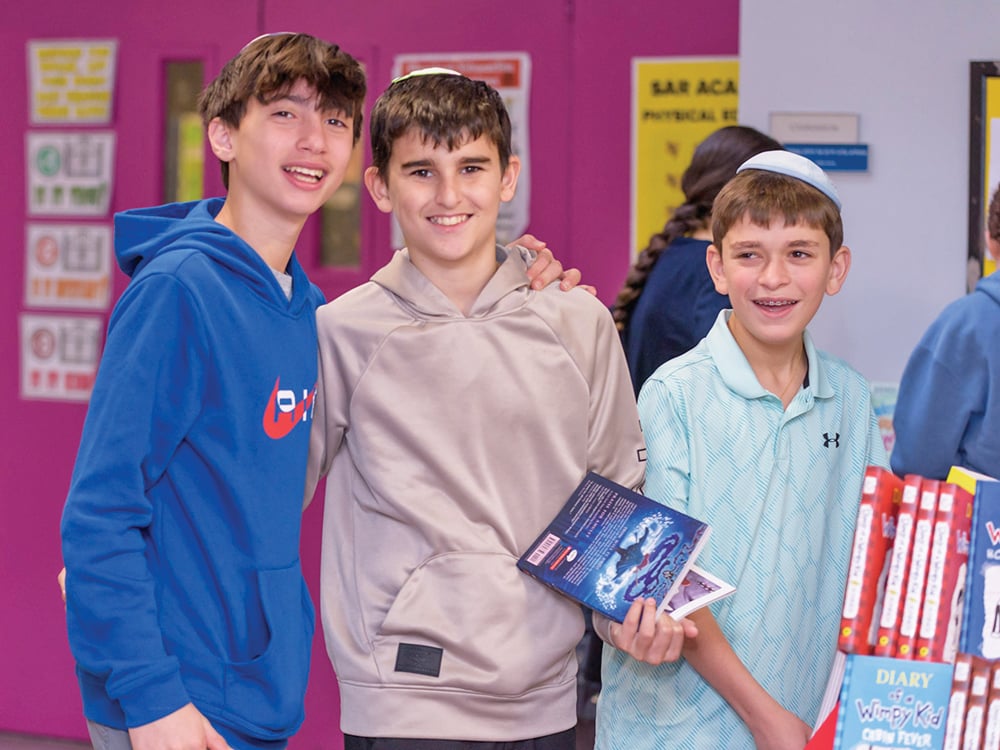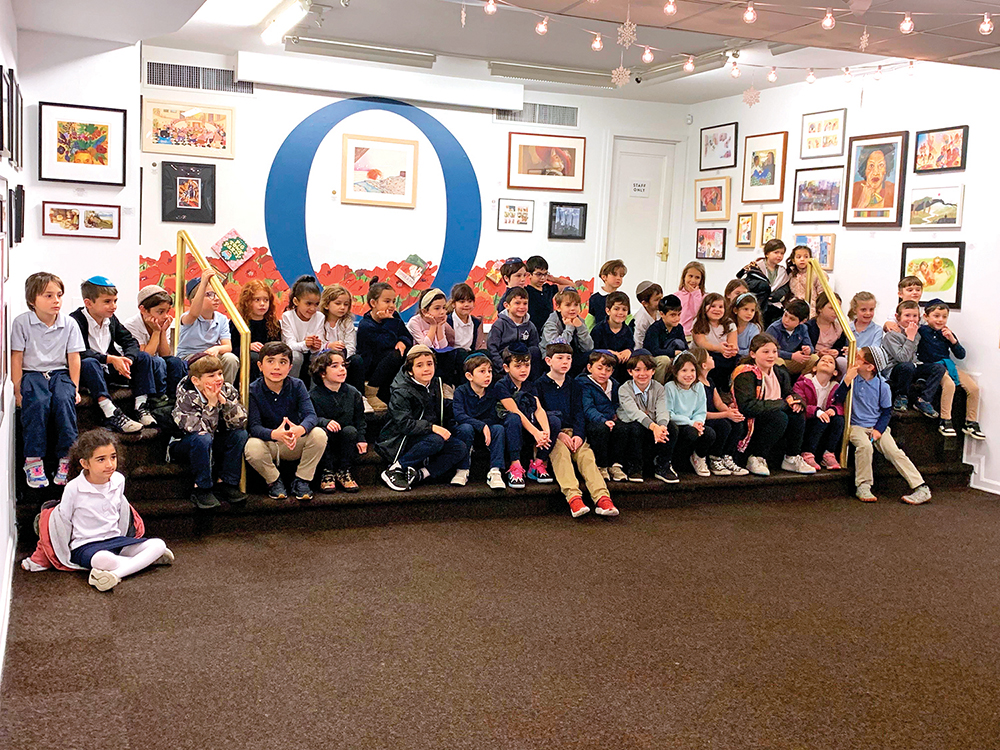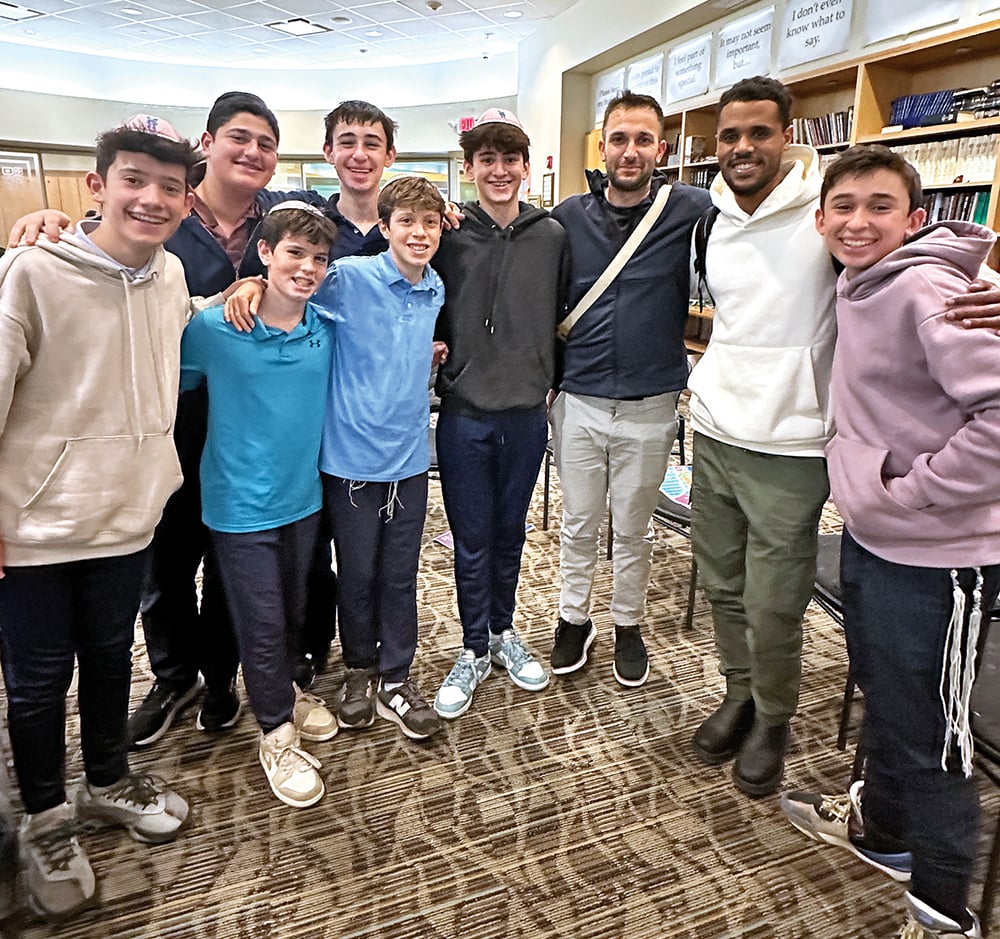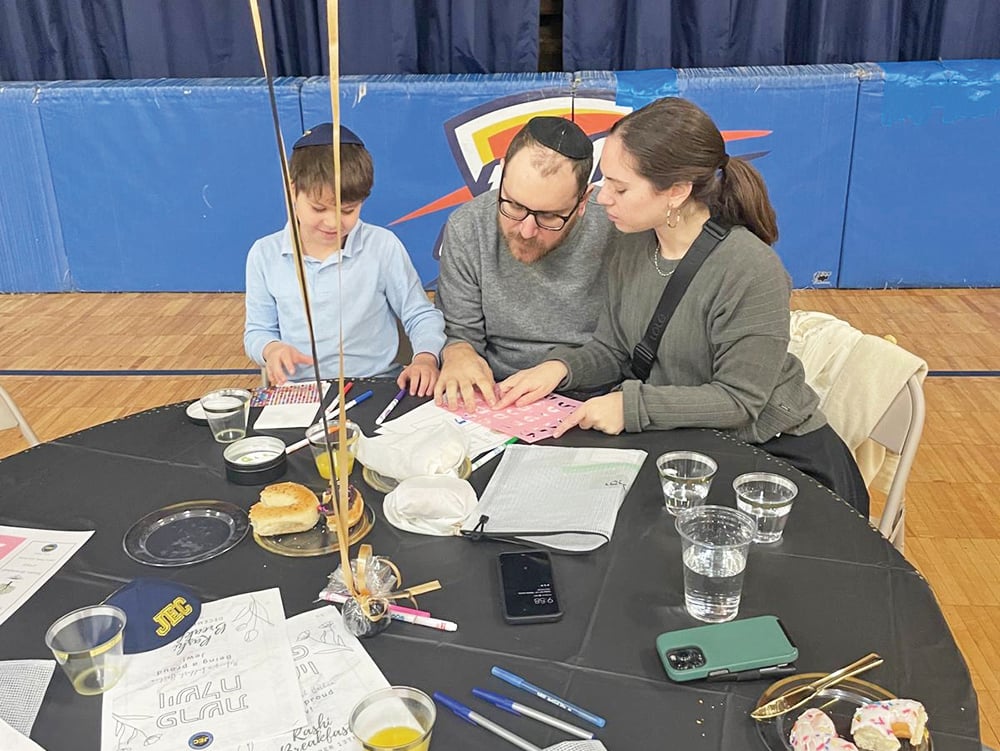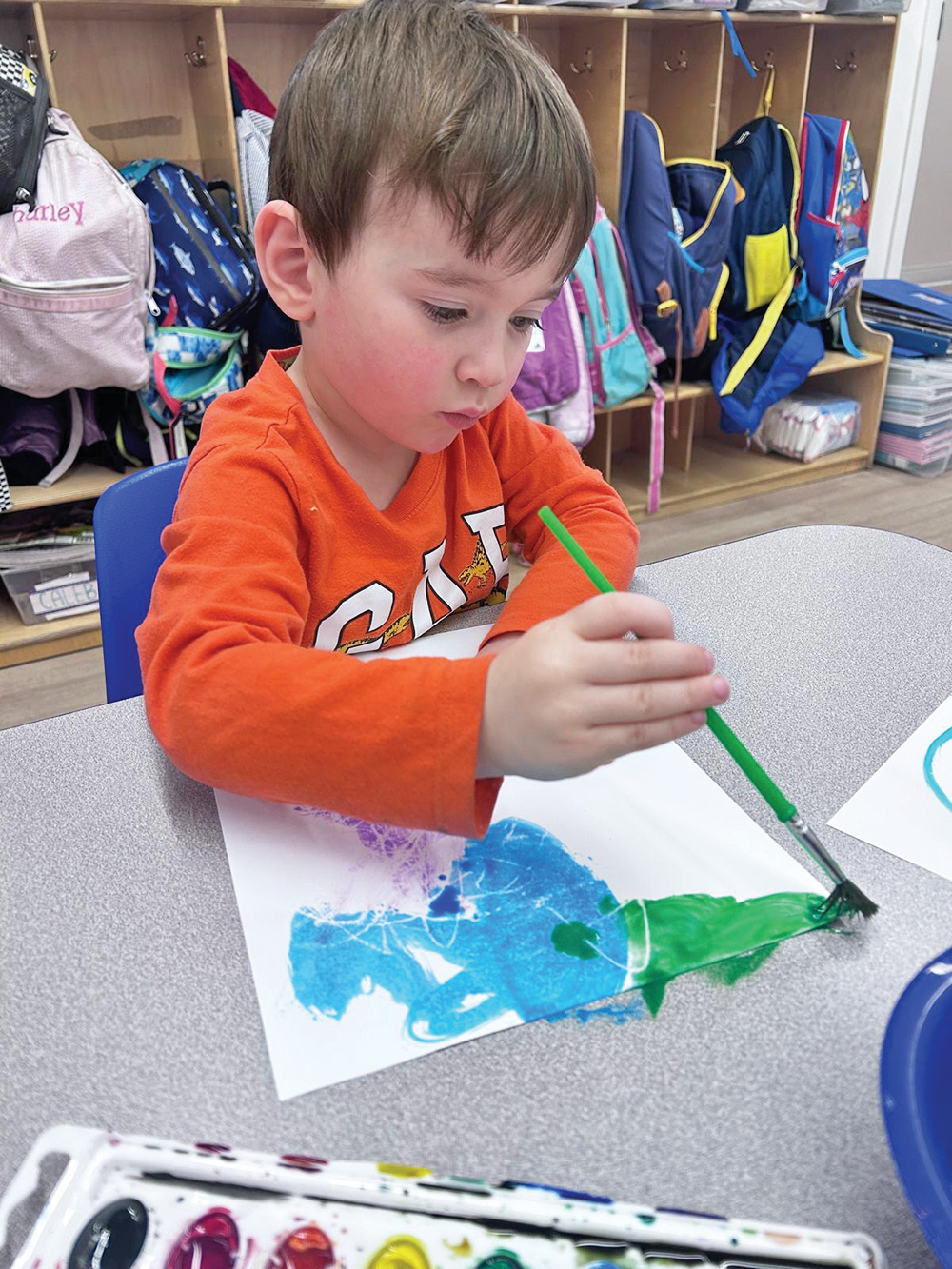
As we come out of Shemini Atzeret and Simchat Torah, the weight of the anniversary of last year’s atrocity in Israel weighs heavily on our community. It’s a time of sadness and reflection, yet also deep meaning. Together we mourn what has happened and acknowledge our fears about what may lie ahead across four generations of congregants.
As a synagogue that provides youth programming and also encourages active participation of children, we grappled this year with how to celebrate these holidays while also appreciating the variety of emotions that our children and we were all feeling. One way we chose to commemorate and celebrate these chagim was to incorporate Torah with an eye toward the wisdom of King Solomon, Shlomo Hamelech.
One of the Torah scrolls we often use is the one dedicated a decade ago, with an eye toward King Solomon’s directive, “Chanoch lenaar al pi darko,” or “Educate a child according to his nature,” (Proverbs 22,6). The Torah scroll was, in fact, selected particularly for its clarity of lettering and the capacity it therefore provides for individuals with learning differences, such as dyslexia or attention difficulties to learn how to chant and follow the “taamim” despite those differences. In this way, the scroll is used in a practical manner with an eye toward enabling a variety of leiners (those leining) to develop their skills with an eye toward our understanding of modern neuroscience and the prescient words of King Solomon’s words authored millennia ago.
This same “Solomon and Synapses” approach the bridges contemporary understanding of human development with Jewish tradition is an important perspective apparent in from the wisdom of King Solomon’s words in sefer Kohelet, Ecclesiastes: “There is a time for war, and a time for peace; a time to mourn, and a time to dance,” (3,4).
These words—read each year during the Shabbat in October—remind us of the inevitable cycles of life, and the importance of recognizing that while pain and loss are part of our journey, so too, are joy and celebration. This dual perspective—informed by tradition—offers us strength in these challenging times. It encourages us to acknowledge our grief, while also recognizing the moments that call for hope and resilience. In contemporary psychology, managing this paradox is a core component of therapies that enable those facing trauma—whether individual or collective—to recognize and manage these dialectical realities. Amid the pain of this tragic anniversary, we also had an opportunity to draw upon King Solomon’s words as a source of solace and a strategy to manage the opposing realities—for ourselves and our chosen.
In anticipation of this first anniversary, we decided to incorporate King Solomon’s “mourn and dance” dialectic into using the Torah that already so embodies his words through its accessible design. The kolaniyot, or poppies ground us and speak to the emblematic growth of the agricultural communities in Israel’s south and the proximity to the Nova festival where so many danced to reverberating music. Above, King Solomon’s words—so central to our perspective—flies a flock of ibis, or maglan. These birds—known for their intelligence and adaptability—also represent the IDF elite unit of the same name. Maglan commandos—named for their capacities and role—similarly are adept at combining fighting skills, technology and intelligence to adapt to battle priorities at that moment. We are grateful for the protection that all the IDF soldiers and pray for their continued safety and success in defending Am Yisrael.
This Torah cover—with the perspective of King Solomon, treasuring the land of Israel and praying for the safety of our soldiers—embodies our feelings and aspirations as individuals and as a community. Our hearts were with other Jews worldwide as we both recited Yizkor, celebrated “Chazak, chazak,” and were strengthened by the start of a new cycle of reading the Torah—the learning, growth and resilience inherent in that never ending process.
Understanding how we cope with these challenges varies greatly from person to person, and science offers valuable insights into why this is. Neuroscience and the science of learning tell us that people respond to adversity differently—shaped by our unique neurological makeup and where we are in our development. For some, community and prayer provide a safe haven for processing grief and finding comfort. For others, the creative expression of emotions through art, writing or music helps them navigate their pain and make sense of the world around them.
This variety of coping strategies underscores the importance of respecting each individual’s way of healing and growing. As a community, we must support one another in our diverse paths toward healing, while recognizing that there is no one “right” way to grieve or find hope. Whether through the solace of prayer, the creative outlet of music or art, or simply the comfort of gathering with loved ones—each pathway is valuable and necessary.
One crucial responsibility we bear during this difficult time is helping our children navigate their own complex feelings in a developmentally appropriate way. Children—like adults—need to process grief, but they do so according to their stage of development. It is vital that we engage them in conversations that encourage critical thinking, while also considering their emotional and cognitive readiness.
One way to start is by reflecting on the wisdom of “a time to mourn, a time to dance” with your children. This simple, yet profound idea can help them understand that both grief and joy have their place in life.
Here are some questions you might consider asking your child to foster these important conversations:
- What do you think it means to say there is a time for mourning and a time for dancing?
- How do you think people balance feeling sad about something while also being happy about other things?
- What are some ways that you like to feel better when you’re sad?
- How can we remember the people we’ve lost and still find reasons to feel hopeful?
These questions can help children begin to think critically about emotions, loss and the cyclical nature of life, all while feeling supported in their unique ways of understanding.
Within our community, we are finding ways to memorialize those who have been lost and those who are still missing, while also maintaining the strength and joy that comes from studying Torah together. This delicate balance of honoring the dead, while continuing to embrace life is at the heart of how we move forward. We can model for our children what it looks like to hold grief and joy together—just as we ourselves are learning to do.
In these efforts, it’s essential that we continue to create opportunities for children to engage in meaningful learning and growth, both spiritually and intellectually. Through age-appropriate discussions, community prayers and engaging activities, we can help our children understand that while there is pain and loss in the world, there is also hope, resilience and joy. As we work together to mourn and remember, we also find the strength to celebrate the joy of learning and the connection we share as a community.
As we move beyond this meaningful and challenging milestone of Oct. 7, let us draw strength from one another and from our shared traditions. Let us remember the words of Ecclesiastes, and hold fast to the knowledge that there is, indeed, a time for mourning and a time for dancing. And in both, we are not alone. Our community—in all its strength and diversity—is here to support each other, to guide our children and to find hope in the midst of sadness.
—
Rabbinic interpretations of the passage “a time to mourn, a time to dance” from Ecclesiastes offer profound insights into how Jewish tradition understands the cyclical nature of life—especially in moments of tragedy. Rabbinic thought often grapples with the tension between mourning and celebration, teaching us how to navigate these contrasting experiences in a way that honors both without diminishing either.
One prominent approach in rabbinic literature is the idea that mourning and joy are not mutually exclusive, but rather intertwined aspects of life. The sages teach that Jewish life is marked by moments of intense grief, but it is also filled with moments of joy and gratitude. The Talmud, for instance, reflects on how these times are often set side by side, with halachic guidance on how to handle conflicting emotions. For example, in cases where a wedding coincides with mourning, Jewish law provides ways to celebrate life while still honoring the loss—illustrating the balance between these two emotional states.
In thinking about Oct. 7, this duality takes on particular significance. While our community is deeply mourning those who have been lost or are still missing, the rabbinic framework offers a way to also hold onto the joy of life, family and faith. Even in the darkest times, Jewish tradition calls us to find moments of light—whether through study, prayer or coming together as a community. These moments do not negate the sorrow we feel, but rather, they give us strength to endure it.
Rabbis throughout history have also taught that mourning is not an end, but a process that leads us back to life. The shiva period, for example, is a structured time to grieve intensely, followed by the gradual reentry into daily life. This structure echoes the idea in Ecclesiastes that there is an appropriate time for everything. In our present moment, the concept of “a time to mourn, a time to dance” helps us acknowledge the full range of human experience—allowing us to grieve deeply, while also giving us permission to seek joy and meaning as we move forward, even in the face of great loss.
Rabbi Benjamin Skydell is the rabbi of Congregation Orach Chaim of Manhattan’s Upper East Side. Congregant Dr. Rebecca Mannis is a learning specialist and founder of Ivy Prep Learning Center.



